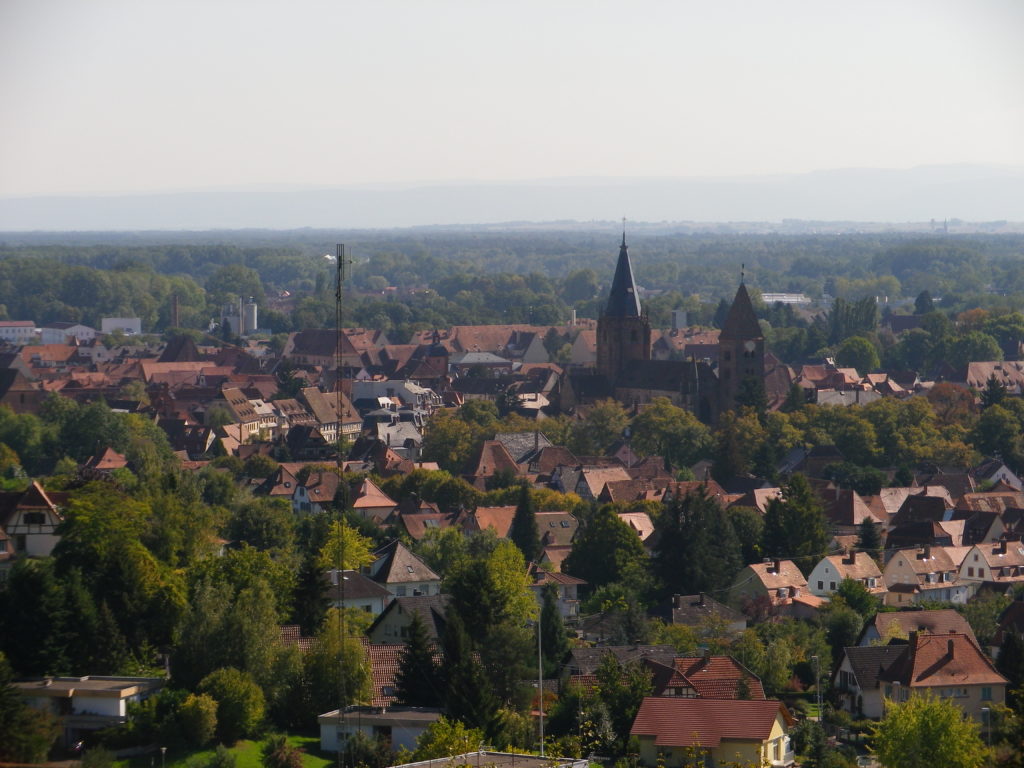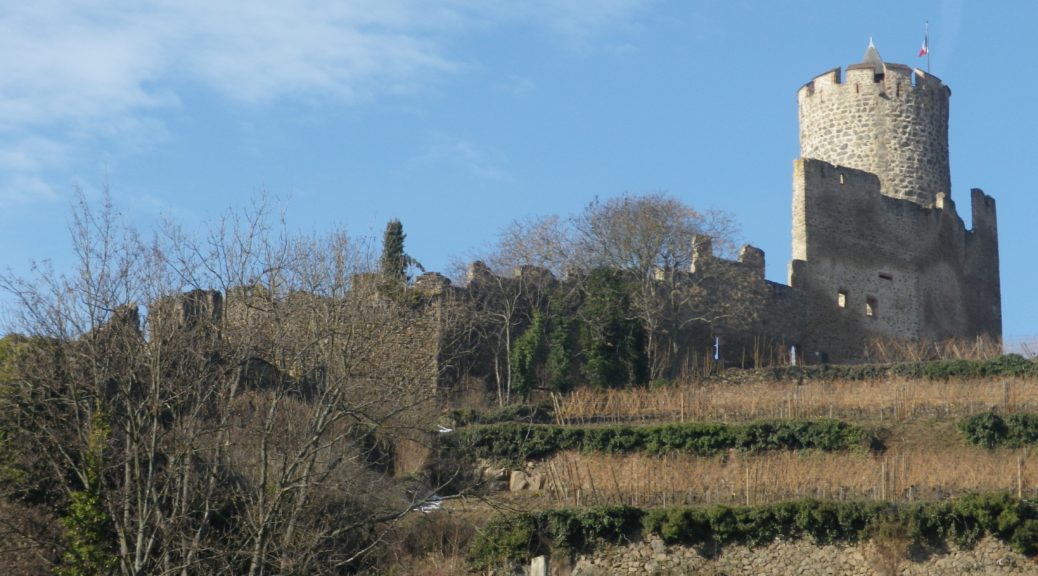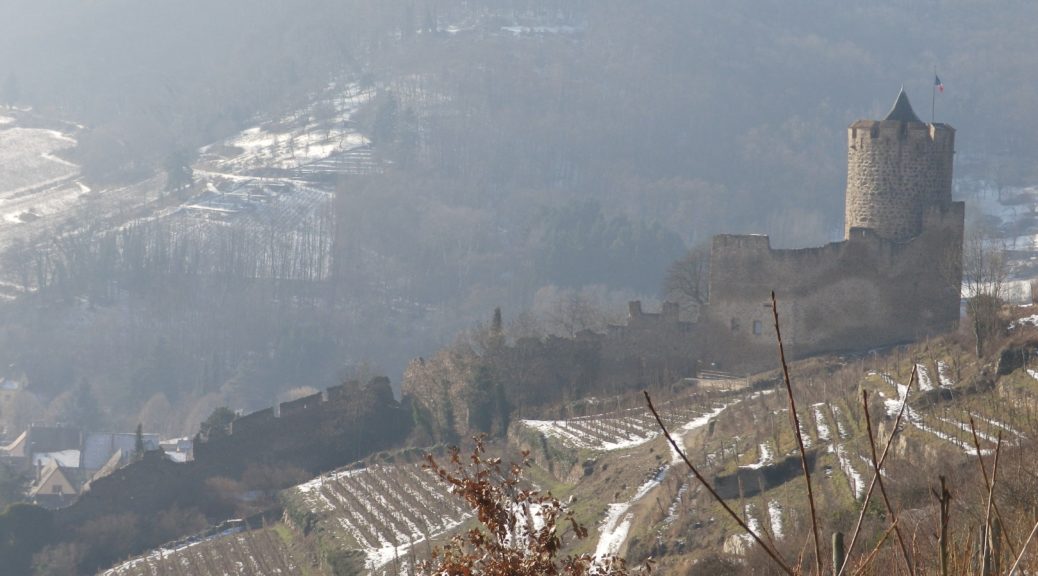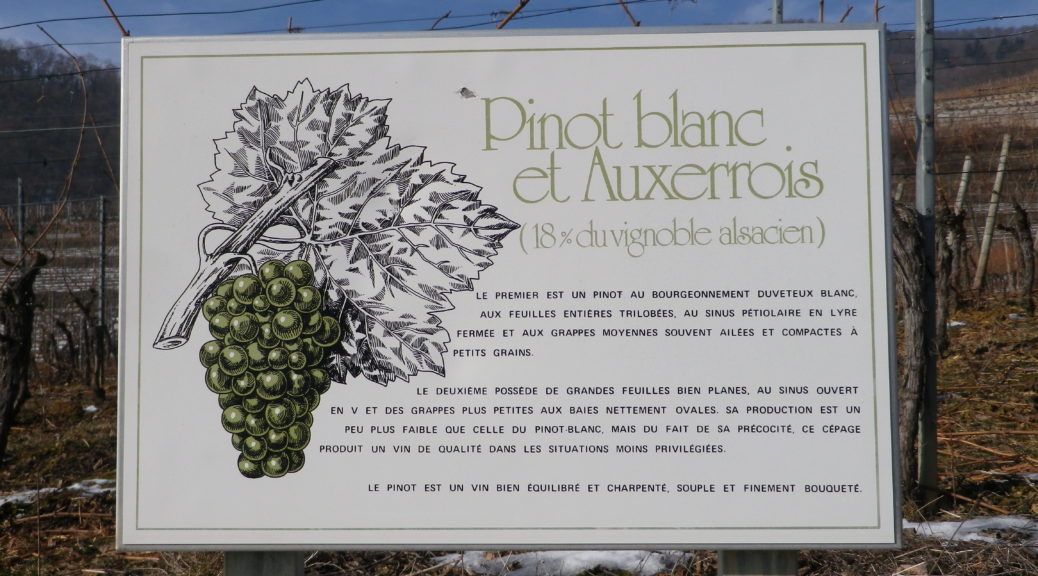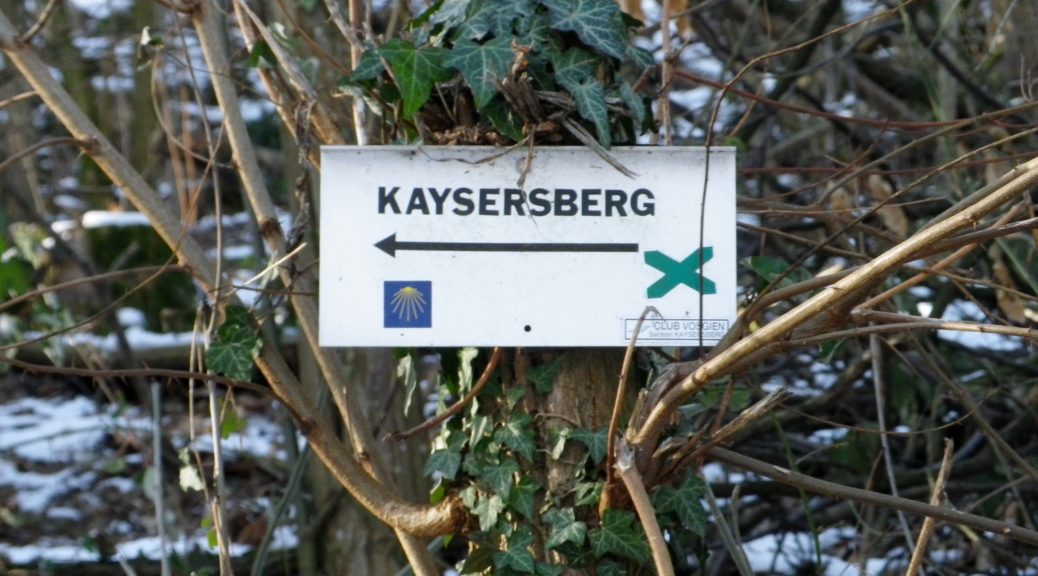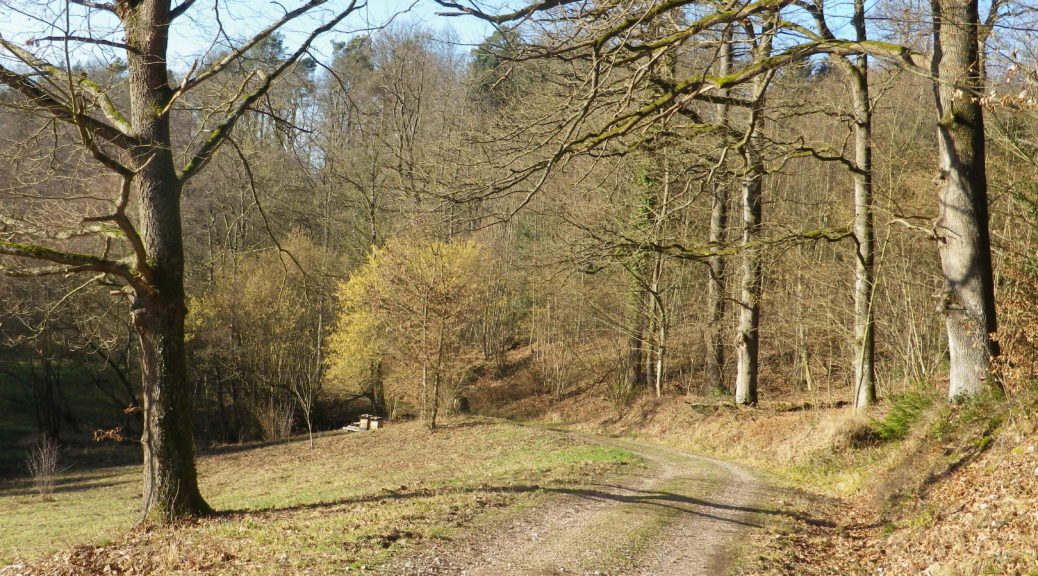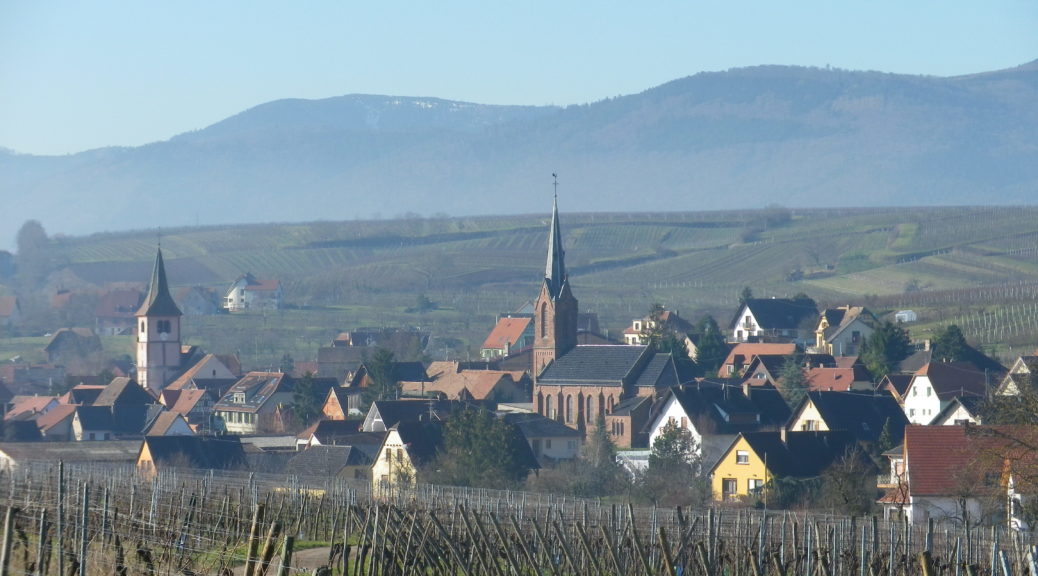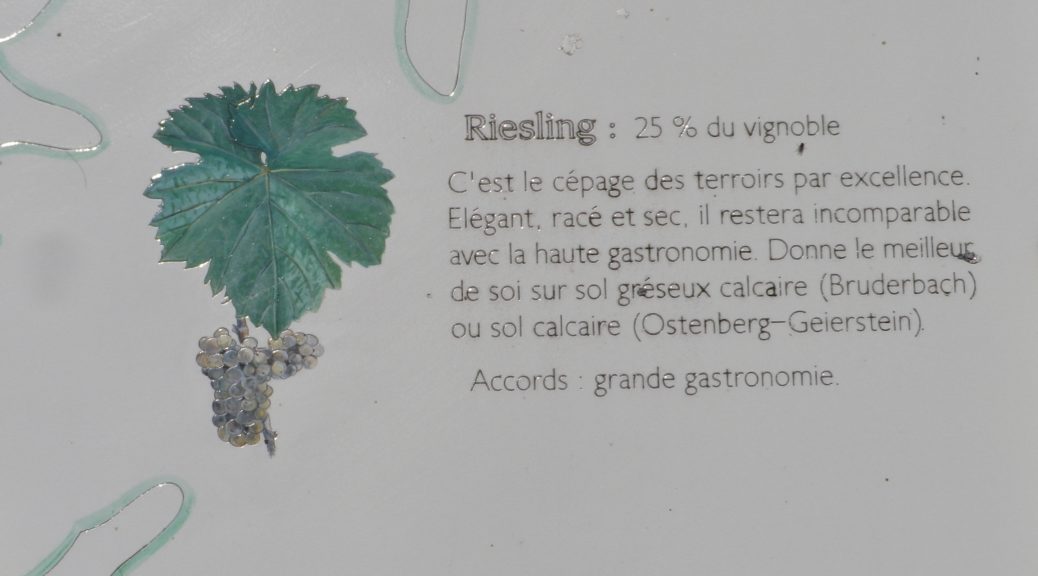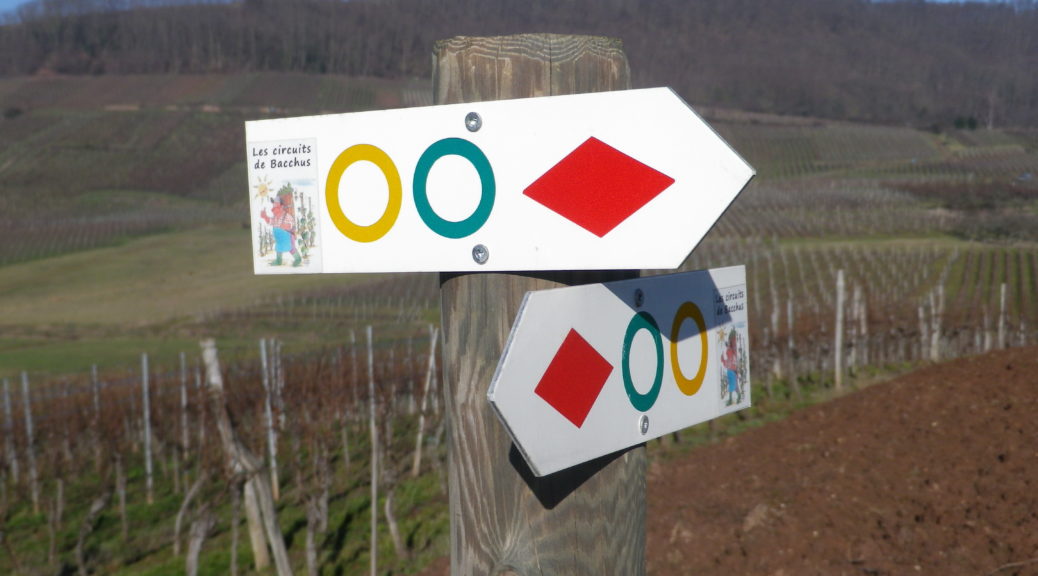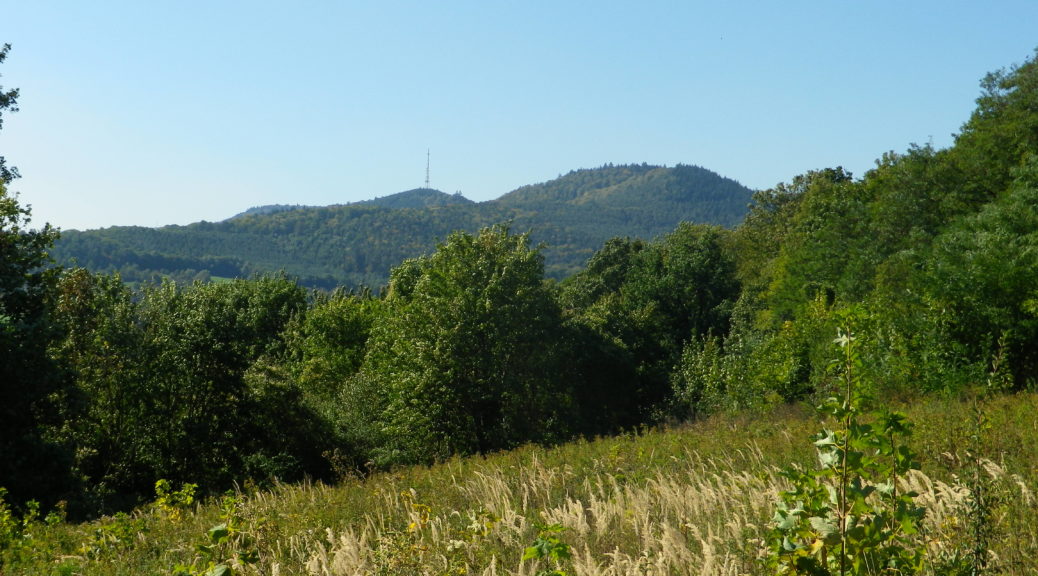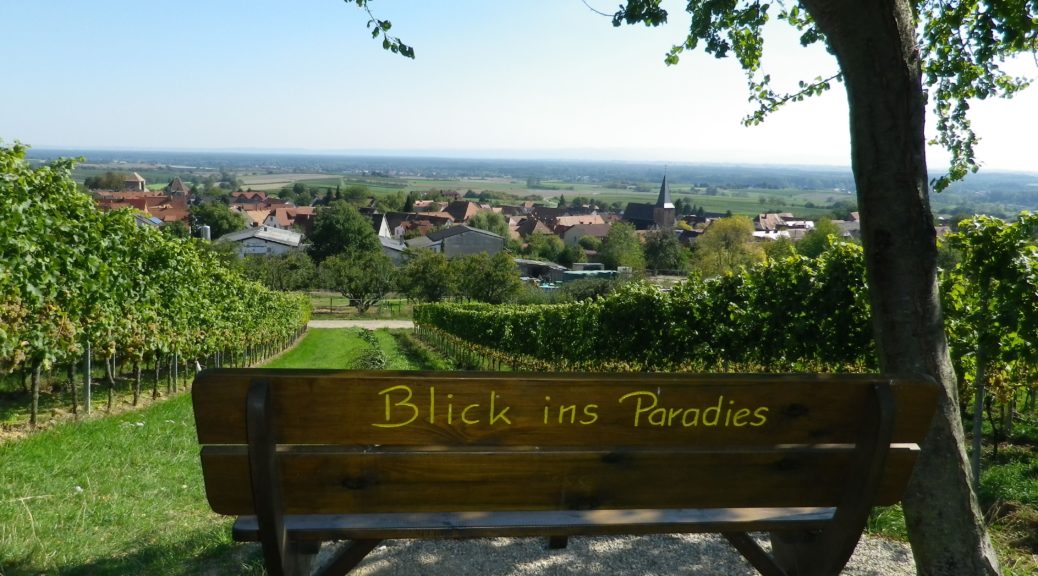Tag Archives: Alsace,
Wine on the Way
Wine is a great European tradition. The Way of Saint James (“The Way”), a pilgrimage route to the far northwestern corner of Spain, is another. The two combine magnificently on this short hike.
Around the year 1000 A.D., people across northern Europe began to undertake pilgrimages to the shrine of Saint James (the Greater). The routes they took to northern Spain tended to converge in France, just in front of the Pyrenees, which they would cross in groups, before continuing the long trek across northern Spain. Of course, for northern Europeans, there was no one route, rather a series of waypoints (mostly small towns or large monasteries) that lead to the Pyrenees’ passes. Most of these waypoints were a day or so apart, where those who hiked The Way (and that was most of them), could find food, shelter and safety for the night. The routes today, if not strictly identical to the ones in medieval times, still follow that precept. Hiking in Germany, northern France, even Switzerland, The Way routes are seemingly ubiquitous. It is now popular to hike in stages over the years, culminating finally at Santiago de Compostela.
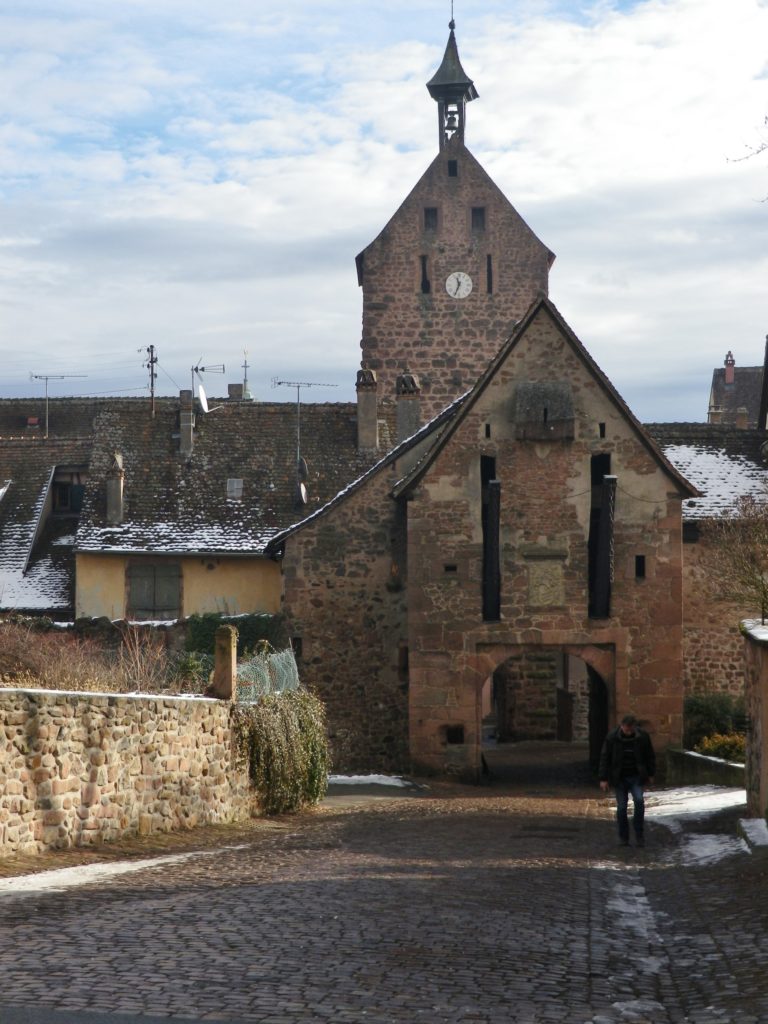
Wine Notes: Alsace Haut-Rhin Grands Crus
What I Learned
Alsace’s Haut-Rhin (upper Rhine) area’s interesting geological history resulted in some great terroirs. It was initially born of volcanic activity. Once spent, the volcanic mountains collapsed on themselves, and an ancient sea covered the area. Then two roughly parallel mountain chains arose (the Vosges in France, and the Black Forest range in Germany), and the ancient Rhine river poured through the resulting valley. As the river receded to its current banks, it exposed the slopes of the Vosges. The soil here is incredibly complex, thanks to this geological history, and it results in minerally, and complex wines.
Alsatian Way of St. James: Trail in a Nutshell
Trail Name: The Way of Saint James (Chemin de Saint Jacques de Compostelle)
Trail Type: Long distance; much of it paved (in this section), well maintained, and fairly well marked.
Length:
Total – Approximately 2000 kilometers (to reach Santiago de Compostela, Spain, from northern Alsace)
Segment – 7.5 kilometers/ @4.5 miles
Convenient to: Colmar, Alsace, France
Marking:
“Chemin de Saint Jacques de Compostelle” (Stylized cockleshell of yellow rays on a blue background)
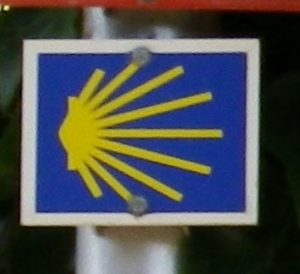
Continue reading Alsatian Way of St. James: Trail in a Nutshell
Gallery January 2017
Small Casks and Other Delights
In a brilliant tour de force, the regional authorities in the department of Bas Rhin, Alsace, have done much to promote wine tourism in this often-overlooked corner of the Alsatian Wine Route. In addition to an up-to-date wine cooperative (and shop with liberal hours), featuring some of its local Grand Cru wines, they have developed a series of wine-themed hiking circuits. There are four circuits, ranging from 17 kilometers to 13.6 kilometers. These circuits all share at least one section. To hike the outside edge of them all results in a hike of 35 kilometers. My kind of tourism. So I selected the circuit that went closest to the cooperative: the Loejele Circuit.
As this is a circuit, it is possible to begin anywhere along it, but I chose Wangen because it was closest to the highway. It is a small village, but one with its medieval walls still partially intact. In fact, my start took me out one of the gates, past the cemetery and into the vineyards in rapid succession.
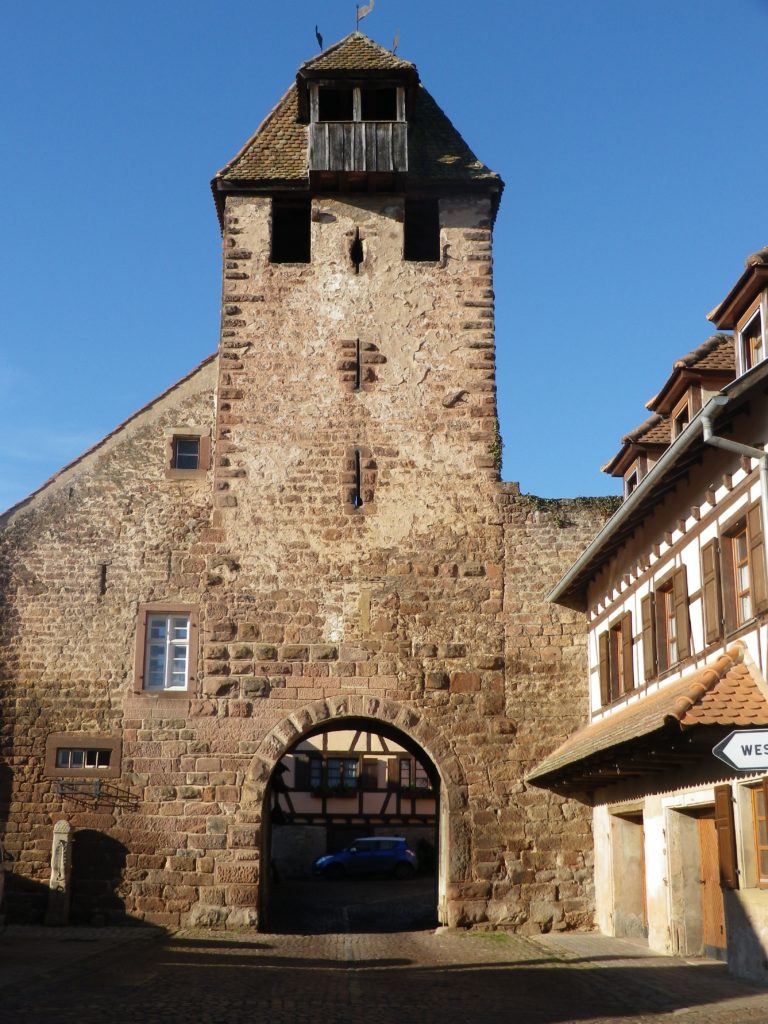
Wine Notes: Alsace’s Bas Rhin
What I Learned
The Bas Rhin department, in the far, northeastern corner of France, can lay claim to several Grands Crus of Alsace. Many of the better-known ones begin around Barr, and continue south. These are the Zotzenberg of Mittelbergheim (which produces Sylvaner Grand Cru wine, unusual in Alsace); the Kastelberg, Wiebelsberg and Moenchberg Grands Crus of Andlau; the Muenchberg of Nothalten and the Winzenberg of Blienschwiller; Frankstein of Dambach la Ville, and the Praelatenberg of Orschwiller/Kintzheim, the southern-most Grands Crus in the entire Bas Rhin department. However, the northern area of this department has several of its own. The Grands Crus in the Bas Rhin department from Marlenheim in the north to Bergbieten in the south are: the Steinklotz of Marlenheim, Dahlenheim’s Engelberg, the Altenbergs of Wolxheim and Bergbieten, and Molsheim’s Bruderthal.
The Loejele: Trail in a Nutshell
Trail Name: Le Loejele (part of the trail series “Circuits de Bacchus”)
Trail Type: Medium distance circuit; partly paved, partly packed earthen trail surface; mostly well maintained; the route itself is marked very well.
Length: total: 14.6 kilometers/9 miles
Marking: Trace of a ring in yellow, with a white interior
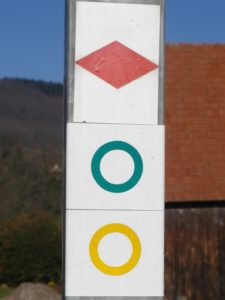
Gallery October 2016
An International Love Affair
The love of wine knows no boundaries, and vines know no political borders. Vintners on both sides of the French-German border in this northeastern-most corner of Alsace tend the land together, owning, or working, parcels on both sides, producing wines, and sharing a growing passion for quality wines. A wine-themed circuit hike here, developed by French and German regional and local tourism authorities, likewise shows a spirit of cooperation. This has produced excellent results, both in wine education, and in an easy, family-friendly hike through an historic French town, a quaint German village, and of course, vineyards.
This hike crosses the border between France and Germany twice. But before there was a border, there were vines. These vineyards, and many others both north and south of the border, belonged to the abbey in Wissembourg, in Alsace. And even though the abbey and the borders (for all practical purposes) have gone, the vines remain. Yet another reminder of the crucial, regional role abbeys and monasteries played in reviving viticulture in these areas after the fall of the Roman Empire.
